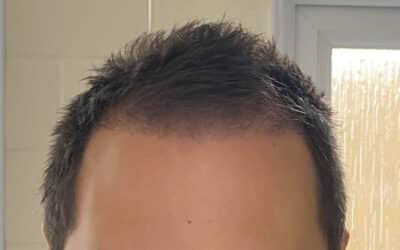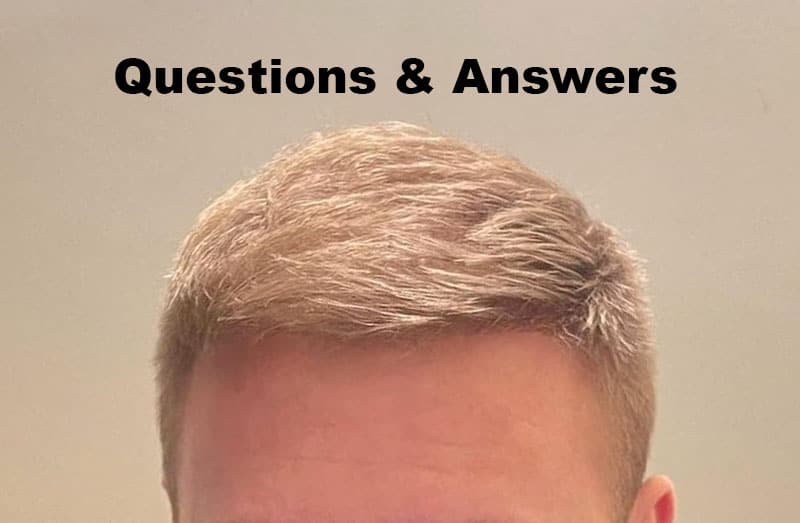Understanding 1000 Grafts Hair Transplant Surgery Procedures
Is a 1000 grafts hair transplant surgery enough for me? One of the biggest questions that we hear during initial consultations is, “how many grafts do I need?” Hair transplant surgery is a big expense. Since most hair clinics charge by the graft, many patients ask if a 1000 grafts hair transplant surgery will be enough to fill in their thinning hair or bald spots. The short answer is usually No. However, that’s not always the case. It’s just the most common answer.
First, you’ll discuss your goals and expectations with your doctor. After going through a full consultation and evaluation, your doctor determines how many grafts are necessary. From there, you can begin your treatment. Remember, every patient is unique, so the answer will vary from person to person. In this article, we will discuss how doctors determine how many hair grafts are required for a successful hair transplant.
Determining the Severity of Hair Loss
When it comes to male pattern baldness, doctors developed a method for measuring the severity of hair loss. This usually follows a predictable pattern, known as the Norwood scale. Oftentimes, this type of pattern hair loss expresses itself in a horseshoe pattern. Frequently, it starts with thinning hair at the top of the head and around the temples. Then, it gradually results in noticeable hair loss on the crown of the head. You may also notice another pattern where the hair recedes from the hairline, creating an M shape.
In order to determine whether a patient would be a good candidate for a hair transplant, and how many grafts they require, the doctor refers to the Norwood scale. Once the type of hair loss pattern has been determined, it is easier to get a clear indication of the number of grafts they will need.
Patients in the very early stages of hair loss with a Norwood scale of 1 will not need a hair transplant at all. They may be able to prevent further hair loss through the use of topical medications such as minoxidil, also known as Rogaine. Or, they may find low-level laser therapy (LLLT) with laser cap devices to be effective. Though not all laser cap devices are of equal quality, the CapillusRX 312 comes equipped with 312 prescription-strength laser diodes. It has been clinically shown to improve hair density and prevent future hair loss. You can find more information on the double-blind study at clinicaltrials.gov.
If a patient is presenting a 2 on the Norwood Scale, a hair transplant surgery will not be necessary, however, transplanting a small number of grafts can help to increase fullness, and improve the symmetry of the hairline. For patients with a Norwood 2 or 2a it is estimated 500-800 grafts will be sufficient to cover the thinning area. For patients with a Norwood 2a the grafts will be transplanted at the center front of the hairline.
Estimating the Best Number of Grafts For You
1000 grafts hair transplant surgery is best suited for patients that have anywhere between a Norwood 3 and 3a. A Norwood 3 with thinning hair at the front of the hairline and temples will require anywhere from 1,000-1,400 grafts. If a patient is presenting a Norwood 3a with thinning at both the front of the hairline and the crown they may need slightly more grafts. Usually, it will take anywhere from 1,000-1,400 grafts to fill in the hairline, as well as an additional 500-1000 grafts to fill in a bald spot on the crown.
When it comes to a Norwood scale of 4 or higher it will be necessary to transplant more than 1000 grafts. Norwood 4 and 4a pattern baldness at the front and crown of the head may require up to 2,500 grafts. 5 and 5a will require over 3,000. Meanwhile, a score of 6 or above where the top of the head is mostly bald, may require as many as 5,000. Usually when a number that high is required, a surgeon will recommend that you undergo multiple surgeries that are spaced out over the course of a year or more. This can also be helpful if you have budgetary concerns.
Another way to estimate the number of grafts that you may need is to measure the area that is experiencing thinning hair or balding. The average hair transplant patient has about 6000 grafts available in the donor area that are available to be transplanted. The average size of the balding area in a type 5 patient is 200 cm2. This is usually divided into two equal parts: The hairline and front half of the scalp, and the back half of the scalp and crown of the head.
Most Patients Need More than 1000 Grafts
According to this math, you set up your transplant in 1 of 2 ways. Your surgeon distributes the grafts evenly throughout the entire balding pattern in order to create a uniform appearance and level of hair density of approximately 30 follicular units per square inch. This is not recommended as it would still give the hair a very diffuse and thin look that the majority of patients would not be happy with.
For most patients, a higher density in the front half closer to 40 follicular units per square centimeter provides their desired look. The second option is to put 4000 grats in the front half and 2000 in the back half. This will create a density of 40 follicular units per square centimeter in the front half and 2,000 in the back half and crown. In most cases, this gives a fuller look near the face and hairline but may appear slightly more diffuse in the back. It can take between 2-3 hair transplant surgeries to move 6,000 grafts.
There are a number of variables that determine how much coverage a patient will be able to get from their transplant. The first is the determination of whether or not the patient has enough available donor hairs to transplant. The next factor is scalp elasticity. This applies to FUT procedures because a strip of the scalp is removed to harvest the follicular grafts.
Who Might Benefit Most From 1000 Grafts Hair Transplant Surgery?
Scalp elasticity is not as important a factor when it comes to FUE transplants. The tighter the scalp is, the fewer grafts you’ll obtain through strip harvesting methods performed with FUT. There are some scalp exercises and a new medication called Vitrase that can help to increase the laxity of the scalp. Patients with thick, wavy, or lighter colored hair tend to have better results than patients with straight black hair with pale skin. This is because thick and wavy hair tends to appear denser.
Lighter hues of hair will not have as much of a contrast against the pale skin of the scalp as darker hues of hair will. The severity of the hair loss in the recipient area is another factor. As we discussed above, the larger the thinning or balding area, the more hair grafts will be required. The size of the patient’s head must also be taken into consideration, as some people have larger size heads than others.
Another consideration is the patient’s age and potential for future hair loss. The younger the patient is when they experience the first onset of hair loss, the more likely they are at risk for having future hair loss troubles. The older a patient is, the lower their risk becomes. However, these results will vary and can be unpredictable. For example, the myth that hair loss is only inherited from the mother’s side of the family is false.
Making the Best Choice For Your Unique Situation
It is also impossible to predict with certainty whether someone’s hair loss will not progress further. It’s also hard to judge the speed of the progression of their hair loss. With women experiencing diffuse hair loss, they may not be good candidates for hair transplants. This is because the follicular units that are transplanted could still be vulnerable to the shrinking effects of DHT. In other words, hair loss could continue in other areas even after the transplant is performed. However, the transplanted grafts should remain for good.
If your doctor recommends against hair transplantation, or if your budget is too low to cover the number of grafts needed to achieve your desired look, there are other non-surgical options that can be employed instead. As mentioned above, minoxidil and low-level laser therapy can help encourage new growth and prevent future hair loss. Finasteride, or Propecia, is both a topical and oral medication prescribed to men experiencing pattern baldness. Some men report undesirable sexual side effects from the oral medication. However, topical finasteride ointment does not appear to cause the same side effects.
Choosing whether or not to undergo hair transplant surgery is a big decision. Many patients who undergo 1000 graft hair transplant surgery see increased fullness in their hairline. Results are frequently positive. However, as we noted before, you may need more grafts if your baldness is in a further state. If you’ve waited to address it, a 1000 grafts hair transplant surgery may not be enough. It all depends on the severity of your hair loss, the health of your existing hair, and the experience of your hair transplant surgeon. Booking a consultation is a great way to determine what the best options are for you.
SUFFERING FROM HAIR LOSS?
Best Hair Transplant is the best place to schedule your hair transplant in Los Angeles. We’ve helped both men and women regrow their lost hair. But don’t take our word for it. We suggest learning as much as possible about hair restoration. Do so prior to making a decision on how to address your hair loss. Not every procedure is right for everyone.
At Best Hair Transplant, we’re proud of our results and happy to provide hair restoration services. Additionally, we’re proud to make hair transplants affordable and help you save money on a variety of hair transplants.
To ensure your ease of mind, you can view our customer recommendations HERE. Furthermore, you can also see our Google reviews and Yelp reviews. We can’t wait to help you start restoring your lost hair.
YOUR HAIR RESTORATION SOLUTION
Best Hair Transplant
1970 S. Prospect Ave., Suite 2
Redondo Beach, CA 90277
(213) 403-0455
References:
- https://shapiromedical.com/how-many-grafts/
- https://www.alviarmani.com/1000-graft-fue-hair-transplant-to-restore-hairline/












